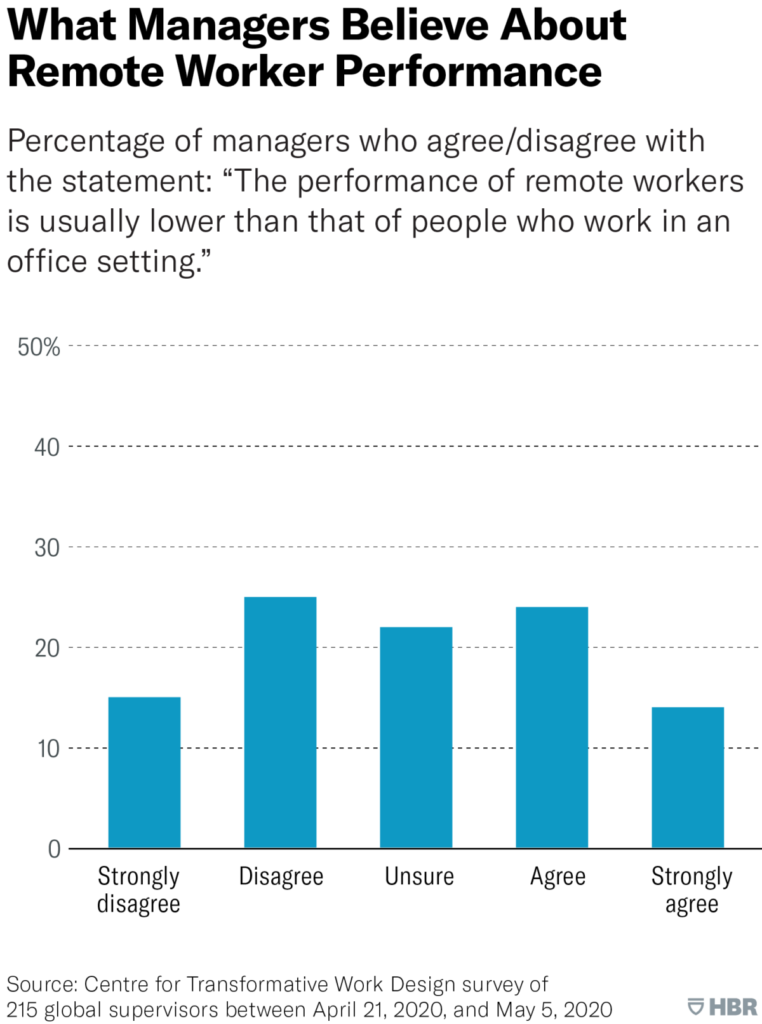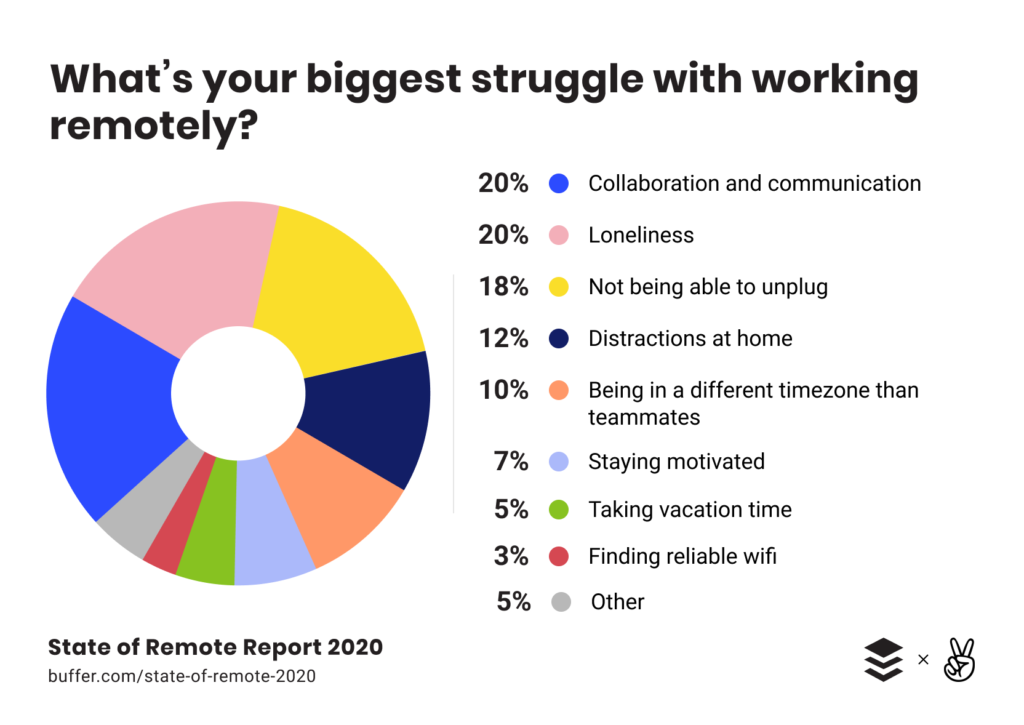Remote work is the future of work — but what does it mean for managers? In this guide, we list four examples of best practices for managing remote teams used by successful remote companies.
UK companies may be planning a slow return to the office, but remote work or work-from-home setups are shaping up to be the future of work. According to a 2020 global HRD survey, 91% of human resources leaders are willing to campaign for remote work arrangements to continue in a post-pandemic world.
More recently, Big Four company PwC announced that 40 thousand US employees can now work remotely permanently from anywhere in the world — albeit with the condition that their pay will be cut if they move to a location with a lower cost of living.
Meanwhile, the remote work experiment the pandemic created has also changed employee expectations for remote work. According to a hackajob survey, 67% of candidates in the UK tech sector are now looking to work completely remotely. However, 53% said they would not consider taking a pay cut to work from home.
NAVIGATING THE CHALLENGES OF REMOTE WORK
Although most employees support remote work, the story is a bit different for business owners and managers.
For starters, many businesses did not have the IT infrastructure in place to deal with the sudden shift. According to a 2020 survey by Studio Graphene, 49% of the 900 UK businesses were unprepared for the shift to remote work before lockdown began.
Another concern of many managers is productivity, part of which stems from low confidence in their ability to manage remote workers. In a study published in the Harvard Business Review, 40% of supervisors and managers expressed “low self-confidence in their ability to manage workers remotely”.

However, we believe remote work is here to stay. So, the best thing business leaders can do is adapt by following best practices for managing remote teams. These include:
1. USE THE RIGHT TOOLS TO MAINTAIN PRODUCTIVITY AND COLLABORATION
Productivity and collaboration tools and software have been around for years. But the pandemic has led to a surge in their usage.
For example, business communication platform Microsoft Teams saw its number of daily active users surge to 115 million in October 2020 — up 50% since the early days of the pandemic.
Related Reading: The Importance Of Cyber Security And The Cloud For Remote Teams
Other tools that have seen a surge in popularity include Slack (which saw users grow from 10 million to 12.5 million in a matter of two weeks during the start of the pandemic) and Asana (1.5 million paid users by the end of 2020).
At Optimising IT, we’re all in on the Microsoft 365 ecosystem for its tight integrations with Microsoft Modern Workplace, Microsoft Office and Microsoft 365 Security, among others.
What Remote Teams Are Doing: UK telecom provider TalkTalk uses Microsoft Teams to enable flexible work for employees in London, Manchester, at home or wherever they may be.
“With Microsoft 365, we’ve been able to extend remote, flexible work styles to all our employees, which has been transformative for us culturally,” says Mark Dickinson, the Chief People Officer of the TalkTalk Telecom Group.
2. REALIGN FOCUS ON EMPLOYEE ENGAGEMENT
The concept and goals of employee engagement will have to adapt alongside the new normal of work.
Before the pandemic, employee engagement mostly revolved around co-located teams. Moving forward, managers will have to frame engagement in the context of virtual environments. This could mean changing the way you communicate with teams, hiring employees with remote skills and providing ongoing employee support in a virtual-first environment.
What Remote Teams Are Doing: Software company Help Scout manages communication etiquette by creating a culture that assumes “miscommunication over malice.” During the onboarding process, new team members are encouraged to think of ambiguous messages — especially those that may come off as personal attacks — as usually the result of miscommunication.

Meanwhile, eLearning software maker Lessonly focuses on creating opportunities for remote workers to get together, such as weekly all-team meetings via video conference. During safer times, staff from different parts of the world were flown to their headquarters for face-to-face interactions.
3. GIVE TEAMS THE STRUCTURE TO SUCCEED WITH REMOTE WORK
It’s not enough to hand your employees a company laptop and send them home, all while expecting them to continue working as if they were in the office. More often than not, that’s going to lead to poor productivity and inconsistent work.
While flexibility is a leading benefit of remote work, it’s still important to set rules for:
- When to work (e.g., at least four hours between 9 am to 5 pm)
- How to get work done
- How to communicate with team members and managers
- Sanctioned tools and software.
You must also have cyber security guidelines to keep your corporate data safe. As your employees leave the boundaries of your on-premise firewalls and IT infrastructure, you’ll need to provide sufficient cyber security training to protect them from hackers and phishing scams.
Related Reading: Email Security Tips: Our Ultimate Guide to Being Part of the 8%
What Remote Teams Are Doing: When Germany declared a lockdown in March 2020, ProSiebenSat.1 Media SE immediately went to work, creating an intranet article with remote work guidelines. This included topics such as what equipment to take from the office, technical requirements, how to organise video conferences using Microsoft Teams and how to use a VPN for security. This manual on “how to work from home” gave remote teams the essential information they needed to have a smooth transition to remote work.
4. LOOK AFTER EMPLOYEE WELL-BEING
Buffer’s 2020 State of Remote Work report found remote workers identified loneliness and the inability to unplug as the top challenges of working remotely.

To be fair, these challenges aren’t necessarily caused by remote work per se but by the circumstances created by the pandemic. In any case, managers and business owners should keep an eye on these potential downsides.
As remote work blurs the lines between work and home life, companies that proactively support their employees’ work-life balance also support productivity and happiness.
What Remote Teams Are Doing: “The data shows that remote workers are much more productive, tend to work longer hours, and are more prone to burnout,” explains Joan Deitchman, Engineering Manager at Buffer. “So ‘how do I know they’re working’ isn’t the question you need to worry about. It’s ‘how do I know they’re getting enough rest?’”
Measures that look after the well-being of employees include:
- Encouraging employees to use all their annual leave each year
- Having a “no meetings” policy during lunch hours
- Having a “no messages and emails” policy after office hours (for teams in one geographic location)
- Discouraging the use of work apps on personal devices
- Managing workloads, so individuals and teams aren’t overloaded.
PLAN FOR THE NEW FUTURE OF WORK
By taking the lead in realigning your management practices and understanding the needs of remote workers, companies can take full advantage of the productivity and engagement benefits of remote work. If your organisation needs assistance to provide the necessary tools and IT infrastructure to your remote teams, be sure to talk to the experts.
At Optimising IT, our personalised IT consultancy services include solutions for remote teams, such as cyber security training, cloud services, and Microsoft 365 licensing and support. We can also help your teams maximise your cloud-based tools and applications to succeed in their remote environments.












